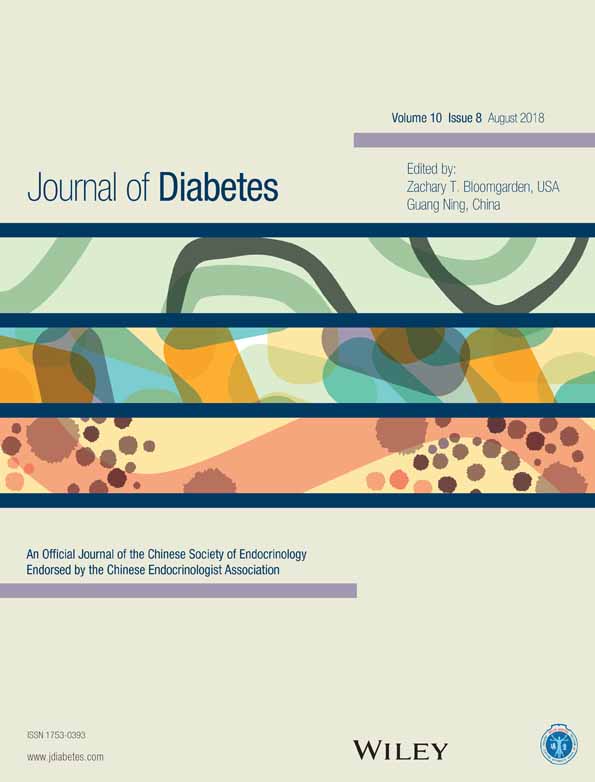Association between plasma trans-fatty acid concentrations and diabetes in a nationally representative sample of US adults†
在具有全国代表性的美国成人样本中血浆反式脂肪酸浓度与糖尿病之间的关系
Abstract
enBackground
A diet high in trans-fatty acids (TFA) induces insulin resistance in rodent models and primates. However, previous epidemiological studies on the association between TFAs, based primarily on self-reported intake from the diet, and diabetes in humans have yielded conflicting results. Herein we examined the associations of objectively measured plasma TFA concentrations with diabetes in a large population-based study among US adults.
Methods
We included 3801 participants aged ≥20 years from the National Health and Nutrition Examination Survey 1999–2000 and 2009–10. Four major TFAs, namely palmitelaidic acid (C16:1 n-7t), elaidic acid (C18:1 n-9t), vaccenic acid (C18:1 n-7t), and linolelaidic acid (C18:2 n-6t, 9t), were measured in fasting plasma using gas chromatography–mass spectrometry. Diabetes was defined by self-reported physician diagnosis, plasma fasting glucose ≥126 mg/dL, or HbA1c ≥6.5%.
Results
After adjustment for other major risk factors, the odds ratios (95% confidence intervals) of diabetes comparing the highest with lowest quintile of plasma TFAs was 2.19 (1.27–3.79) for total TFAs (Ptrend = 0.01), 2.34 (1.48–3.72) for elaidic acid (Ptrend = 0.0004), 1.33 (0.82–2.15) for linolelaidic acid (Ptrend = 0.18), 1.58 (0.97–2.58) for palmitelaidic acid (Ptrend = 0.02), and 1.64 (0.95–2.84) for vaccenic acid (Ptrend = 0.08). In addition, total TFAs, elaidic acid, palmitelaidic acid, and vaccenic acid were significantly associated with fasting glucose, fasting insulin, the insulin resistance index, and HbA1c.
Conclusions
In a nationally representative population, plasma TFAs, in particular elaidic acid, were positively associated with diabetes and biomarkers of glucose metabolism.
摘要
zh背景
高反式脂肪酸(trans-fatty acids TFA)饮食可诱导啮齿类动物模型以及灵长类动物产生胰岛素抵抗。然而, 既往调查TFAs与糖尿病之间关系的人类流行病学研究主要基于自我报告的饮食摄入情况来展开, 所得的研究结果往往互相矛盾。本文中, 我们在美国成年人中进行了一项基于大规模人群的研究, 调查了客观测量的血浆TFA浓度与糖尿病之间的关系。
方法
从1999–2000以及2009–2010年全国健康与营养调查研究中纳入了3801名年龄≥20岁的参与者。使用气相色谱-质谱法测定空腹血浆中4种主要TFAs的浓度, 亦即棕榈酸(C16:1 n-7t)、反油酸(C18:1 n-9t)、异油酸(C18:1 n-7t)与亚麻酸(C18:2 n-6t, 9t)。糖尿病定义为自我报告的医生诊断、空腹血糖≥ 126 mg/dL或者HbA1c ≥ 6.5%。
结果
校正其他主要危险因素后, 血浆TFAs处于最高五分位数的参与者与处于最低五分位数的参与者相比, 发生糖尿病的风险比(95%置信区间)对于总TFAs来说为2.19(1.27-3.79)(Ptrend = 0.01), 对反油酸为2.34(1.48-3.72)(Ptrend = 0.0004), 对亚麻酸为1.33(0.82-2.15)(Ptrend = 0.18), 对棕榈酸为1.58(0.97-2.58)(Ptrend = 0.02), 对异油酸为1.64(0.95-2.84)(Ptrend = 0.08)。此外, 总TFAs、反油酸、棕榈酸以及异油酸与空腹血糖、空腹胰岛素、胰岛素抵抗指数以及HbA1c显著相关。
结论
在有代表性的全国人群样本中, 血浆TFAs, 尤其是反油酸, 与糖尿病以及葡萄糖代谢生化标志物之间呈正相关。




